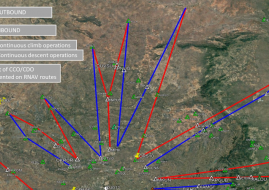Contingency procedures form the backbone of safe air traffic services
Contingency planning and procedures form an integral part of airspace management and operations today. In the event of unforeseen incidence that places limitations on operations within air traffic management (ATM) services, contingency procedures can offer critical support.
It is against this backdrop that the Air Traffic and Navigation Services (ATNS) SOC Limited in collaboration with the International Air Transport Association (IATA) and International Civil Aviation Organisation (ICAO) hosted a two-day SADC Contingency Planning Workshop near OR Tambo International Airport in Gauteng.
The SADC workshop sought to finalise the tasks set by AFI Planning and Implementation Regional Group (APIRG). “The aim of the two-day workshop was to ensure that SADC states’ contingency plans are aligned and coordinated as per the APIRG – ultimately ensuring safe, effective and secure flow or air traffic in the event of any unforeseen disruption to air traffic services,” explains Interim ATNS CEO, Thomas Kgokolo.
The AFI Regional ATM Contingency Plan is intended to provide guidelines to flight information regions (FIRs) and facilitate timely and effective action by all airspace users, air navigation service providers (ANSPs), as well as civil aviation authorities.
Placed within the global context, contingency planning is only implemented when necessary and only as a temporary measure, according to the ICAO. “In the absence of ATM services – contingency procedures provide reports and relevant supplementary information of an advisory nature. This can, for example, be transmitted by pilots for the information of pilots of other aircraft in the vicinity,” concludes Kgokolo.
The most common reason worldwide for the unexpected inability to provide ATM services are staffing problems or equipment failure. An ANSP’s contingency plans are prepared based on the historical understanding of traffic patterns, aircraft numbers and airspace risk profile. These contingency procedures are also by design – developed to minimise disruption which can become extremely costly to normal aviation operations.
Generally, a contingency plan will contain flight paths that can be used by aircraft to avoid the affected airspace known as Contingency Routes. A plan is normally set in motion by a nominated manager tasked with the operational oversight, recording of all activities, notifying affected airlines, monitoring of all flights, and managing the transition back to normal services after the event.
The meeting also highlighted the role of Air Traffic Flow Management (ATFM) in a contingency situation to assist in regulating the flow of traffic around the affected FIRs.
Ultimately, contingency planning and procedures play a fundamental role in ensuring the airspace remains safe and reliable means of travel in the event of ATM services disruption.
Related Posts
« Rail Enforcement Unit nailed 238 suspects, recovered R400 000 in stolen copper cable, metal in first year Bullseye! A communication strategy to hit target every time »



























